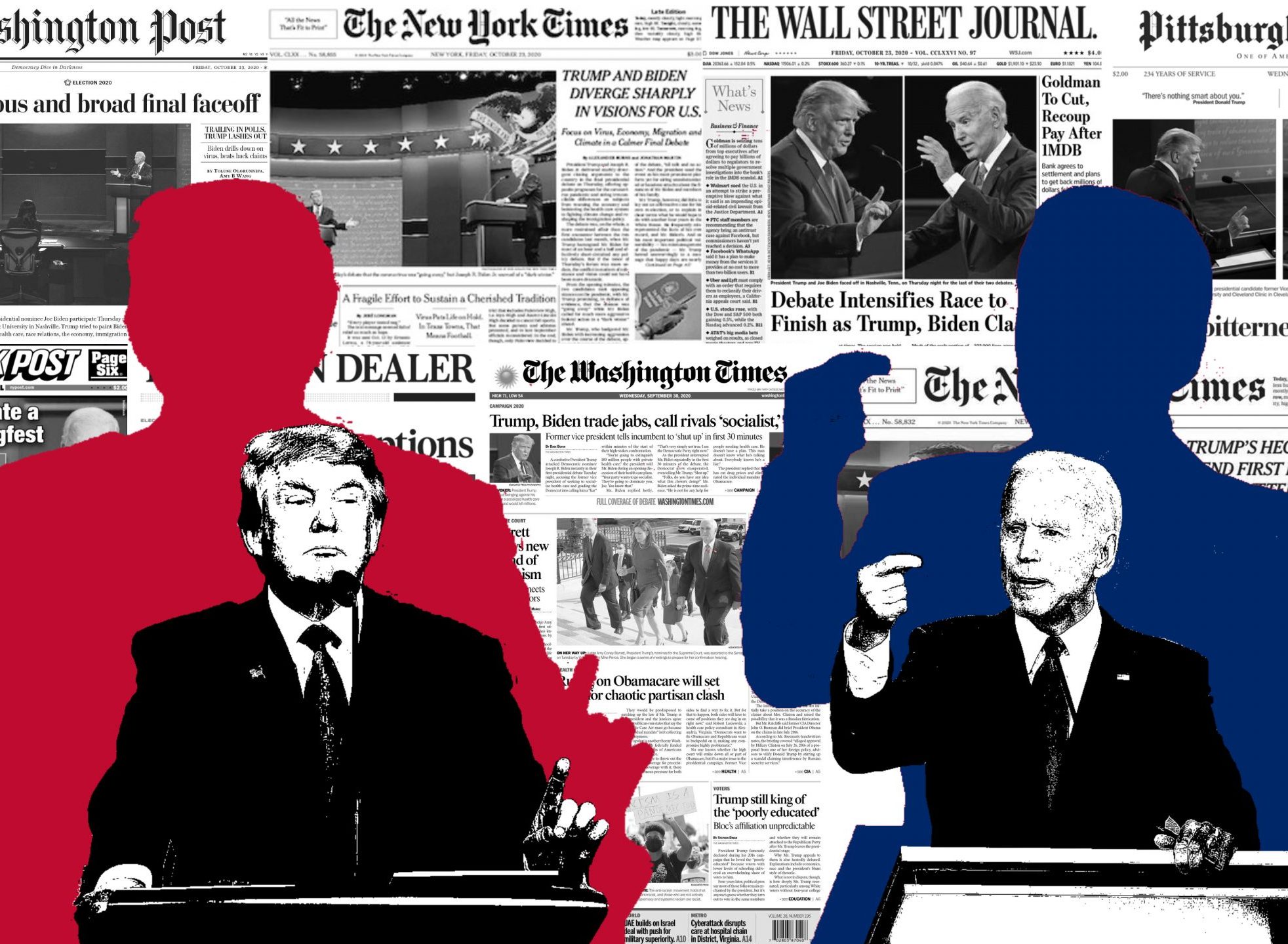Where it Stands
Campaign buses chartered to ad hoc events in the mid-West, last-minute weekend talk show appearances from a litany of surrogates, and drinking games devised off ambiguous cable news phrases. It is election season in the United States.
This Tuesday has been anticipated, and will serve to answer a single question posed to Americans: ‘How do you really feel?’ The question on its surface seems leading, but justly highlights conflicting electoral narratives as Americans cast votes ahead of 3 November.
The consensus of election forecasts from American polling prognosticators suggests that Democratic candidate, also the former Vice President, Joseph Biden holds the frontrunner status. The top forecasts predict a win for him that ranges between a slim 279 edge (NPR) to a 351 Electoral College blowout (Princeton Election Consortium), where 270 is the minimum needed to secure Presidential status. Those forecasts consider the status of individual state polling, particularly the ‘Rust Belt’ that decided the 2016 election by a thin vote total.
The final national polls reflect a population that President Trump has failed to convince of his ability to lead through a crisis. While this does not instil confidence, he likely finds ease in history – no U.S. president since 1992 has lost re-election. Even as George W. Bush steadily lost positive approval following the military entrance in Iraq, the voters pushed him beyond his polling averages.
It would be too easy to say we just have to wait until 4 November to find out. Early voting rules in the U.S. vary, and some stipulate that mail-in ballots can only be counted after election day. Meanwhile, some court motions are already seeking to invalidate votes, and state legislatures could be asked to overturn their statewide results by changing elector laws. Suffice to say – Election Day may be the middleman of a longer ordeal. With that in mind, let us take a brief look at the rare and wonky codes of the U.S. Constitution that have been called to the forefront to confront the nuclear scenarios. One of which may see a president sworn in on 20 January that is neither President Trump nor Vice President Biden.
The 12th Amendment and the Electoral College
It is worth prefacing that the presidential process in the United States consists of states having electors submit separate ballots for President and Vice President. Before the 1804 election, this was done in a free-form manner: the electors cast two votes, one for a separate candidate each, without specifying between President and Vice President. The top two vote-getters would respectively win the offices. As the first two elections were near unanimous, the pitfalls of the system only arose in 1796 and 1800 when parties coalesced and led to arbitrary votes and deadlocked elections.
The 12th Amendment won ratification in 1804 to remedy this issue, allotting one vote for each office (and making party ‘tickets’ easier to assemble). But this Amendment snuck in an additional change: If no electoral vote majority is clear, the House of Representatives will select the President from the top three vote-getters; and the Senate will choose the Vice-President from the top two. Straightforward though it may seem, when we apply the stress-test, we could end up even further from a resolution.
Imagine that, due to complications, no electoral majority is clear ahead of the ‘first Monday after the second Wednesday of December’ (that is the actual phrasing) when electors meet in their state capitals and cast their votes. In this scenario, toss-up states that do not penalise electors for voting their opinion, have incomplete vote totals. These states will either assign arbitrary electors or sit the vote out. So, we go to the House and Senate to determine the offices. In the House, one vote per state delegation; in the Senate, one vote per Senator. The party issue returns – the House votes Biden as the President, but the Senate tries to leverage Trump by voting Biden the Vice-President. By law, you cannot simultaneously hold each office. Back to the courts we go.
The scenario above admittedly hinges on how the House state delegations change between certified and uncertified Congressional races. But moving forward in this case, what happens if nothing is determined by inauguration day? Does inauguration day mean anything at all? Would the current president simply serve until the election is decided?
The answer may surprise you.
The 20th Amendment, 20 January, and 20 Million Options
Could the inauguration date of 20 January be seen from the outside as when a tradition holds no legal weight? The truth is that it does. The 20th Amendment shifted the beginning of the Executive office terms from 4 March to 20 January. Thus under all circumstances, there must be someone with their hand oathing on a book by Noon of that day. It cannot be President Trump continuing as he was a candidate and is not yet qualified. Under the provisions of the 20th, Congress can determine who serves as President from 20 January until the race is decided, and they would likely do so by running down the line of succession, which would elevate the Speaker of the House to the Oval Office.
There you have it – at the end of this ordeal, it is Interim President Nancy Pelosi, if she remains Speaker. The House holds the right to elect the Speaker, but they do not explicitly need to appoint a politician. By the code of the Constitution, the Speaker can be any American.
So, in theory, anyone could be the President come January in this ridiculous stretch of Constitutional scenarios. And it must be stressed how unlikely this scenario is. Congress, as in the past (e.g. 1800, 1824) has the resolve to settle a contingent election without an electoral majority. However, we know this year is far from normal. No matter what, this election will be remembered and studied closely.
As one of the newest and fastest-growing societies, the King’s College London International Relations Society aims to provide a platform for International Relations enthusiasts to engage with various academic, career-related or debate events.You can find us on Facebook, Instagram, and LinkedIn to stay up-to-date.
Events Coordinator, KCL International Relations Society






0 Comments